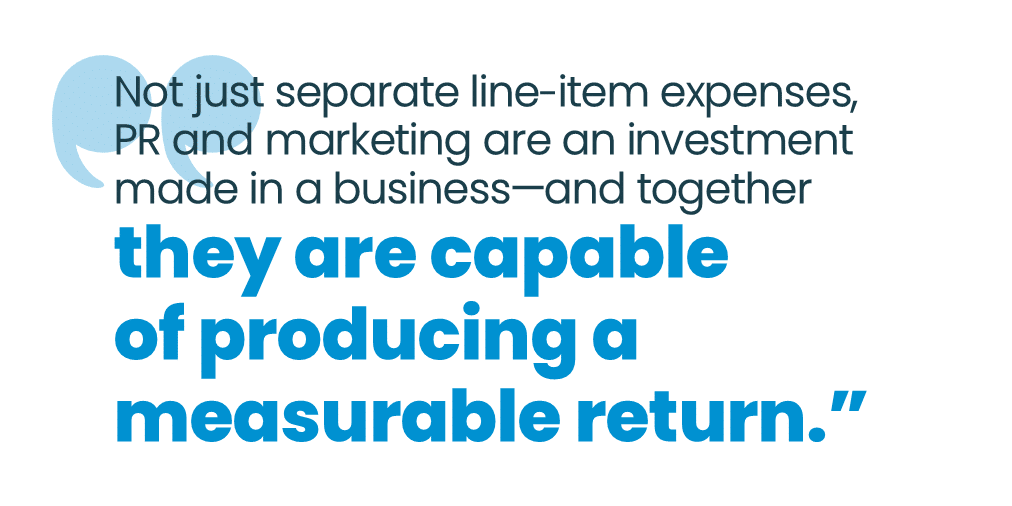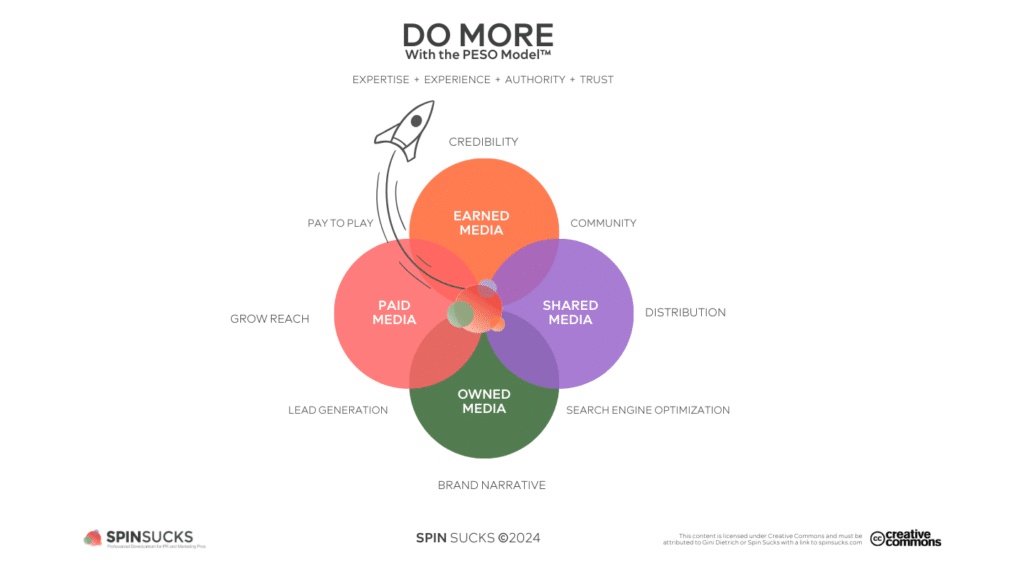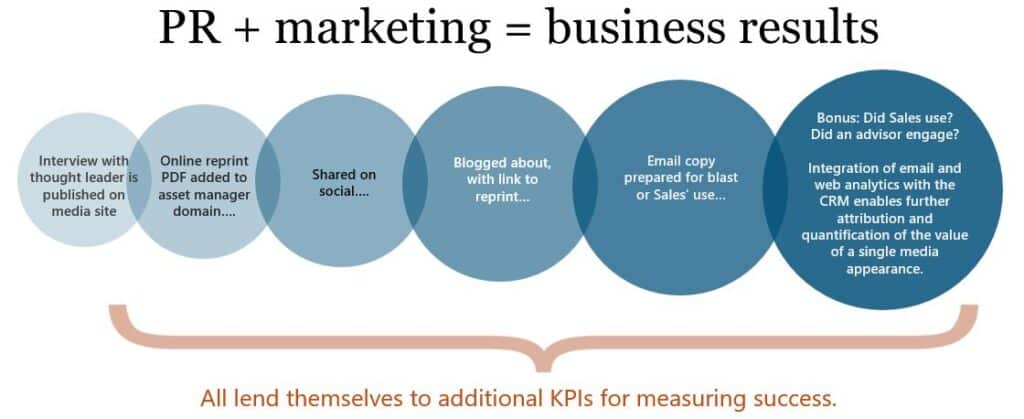
The updated PESO model and the PR/marketing conversations it can help drive
For today’s post, both Lowe Group President & Founder Jody Lowe and Pat Allen, head of LG Digital, weigh in on the recently updated PESO model and the relevance of the underlying thinking to investment communicators.
Jody's PR perspective: Yes to PESO—just maybe not in that order
Most communications pros have seen the Venn diagram with the overlapping circles showing how Paid, Earned, Shared and Owned media work together. The goal of the integrated PESO model, as created by Gini Dietrich of the Chicago-based PR firm Spin Sucks, is to create a cohesive strategy that establishes authority, leading to thought leadership, credibility, and expertise. Created in 2009 and introduced to the world via the 2014 book Spin Sucks, the PESO model has just been updated by Dietrich.
Dietrich was brilliant in applying the memorable name PESO and the ubiquitous image that effectively reflects how PR integrates with all aspects of an effective marketing program. Her update is terrific and touches on how changes to the media landscape—especially as traditional media has been strained and faced major layoffs at news organizations this year. The cutbacks forced PR pros to think about other earned media methods beyond traditional media including the trade publications, LinkedIn newsletter authors, bloggers, podcasters, YouTubers and influencers that are now targets of our PR campaigns. (Also, see our recent post on the rise of financial influencers.)

We’ve argued for some time that to get the most bang for your PR buck, you need to amplify every outcome through owned, shared and sometimes paid channels. But is the PESO model right for investment firms?
Is OSEP a word?
Clever and memorable as the PESO acronym is, many investment communications programs don’t start with paid. A better acronym for investment comms may be OSEP.
Not nearly as memorable, but for many firms, content is at the heart of any promotional efforts. Asset managers and RIAs start with owned media like thought leadership content, market commentary and white papers. Compelling and timely content gets shared on websites and on social. Digital marketers often summarize the content into emails that sales teams can use to target certain distribution partners, tracking the content and using the information to drive follow-ups.
Your PR team can use these content insights to pitch media stories or seek to place an article in a key publication read by the financial advisors, high net worth clients or institutional investors you want to target, turning owned media into earned media.
ESOP is definitely a word
Things can happen the other way, too. My brain starts with earned. As a PR professional, I almost always start with earned opportunities and look for ways to amplify them. You can’t let a PR outcome be one and done! Turn earned media into owned with a succinct yet detailed summary of an interview or TV appearance shared (via email or social) or posted on owned media (website). That same content can become paid with boosted posts on social or banner ads linking to your website.

In a crisis, communications should start with earned. For Immediate Release podcast host Neville Hobson made the point recently, and we agree. During a crisis it can be so important to get your message out through respected third party media organizations. Those articles can then be shared in multiple ways.
Pat's digital marketing perspective: Visibility is a shared responsibility
The PESO model originated in the PR world and I’m not certain to what extent it’s reached digital marketers at investment firms. But explicitly or not, it’s part of what’s driving a growing realization that building the visibility and relevance of a firm online is a responsibility that PR and digital marketing share.
Simply put, businesses need attention to grow. Except that nothing is simple about growing investment firms. The typical asset management firm follows an account-based model with heterogenous distribution partners (see this post about the change underway in the fund industry). Via merger and acquisition or organically, growing an RIA has its own specific challenges.

At the same time on another floor and maybe in a different building, digital marketers have grown dissatisfied with the obvious, superficial measures of their work—the opens, the clicks, the likes, even the website views in aggregate.
While coming from different disciplines and different directions, PR and marketing communicators both are motivated to dig deeper to understand and measure the true impact of what they do and its contribution to overall business objectives. This is leading toward heightened communication and collaboration between the two, resulting in careful attribution of activity to results.
Not just separate line item expenses, PR and marketing are an investment made in a business—and together they are capable of producing a measurable return. However, going the extra mile to stitch communications activities together to track how PR and marketing lead to business results is essential to make the case.
In our client work on and on the blog (see Financial PR and digital marketing: How they work together), this has been a favorite theme of ours. We help firms work across silos to better leverage PR and marketing work, and to measure the greater contribution being made.
Subscribe.
Receive the latest news and insights from Lowe Group.